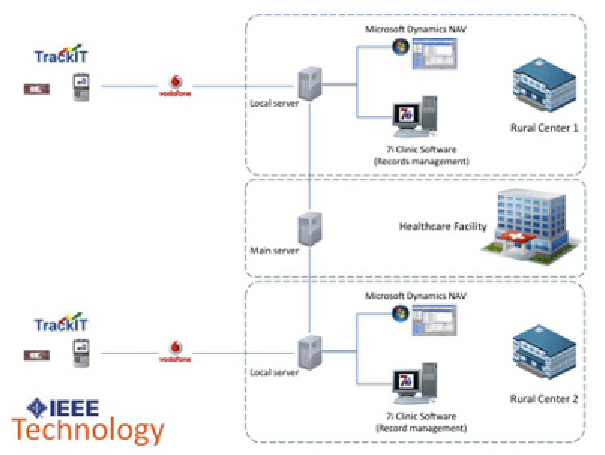Information Technology Reference
In-Depth Information
Figure 4. Technology Implementation Plan
Microsoft Dynamics
(130,000, 50,000, and 70,000, respectively for
each of the three test sites).
The framework further supports a research and
development facility, allowing interdisciplinary
international contributions aiming to enhance
the outcome of the implementation. This will
be the gateway for further IEEE involvement,
monitoring and studying the pilot test. The solu-
tion implementation framework is outlined in the
diagram of Figure 5.
Microsoft Dynamics is a line of familiar, adaptable
enterprise resource planning and customer rela-
tionship management solutions designed to meet
almost any business need and help organizations
make important decisions confidently. Dynamics
offers integrated healthcare management solu-
tions making it easier for physicians, nurses, and
administrators to share patient information for
clinical decisions and cross-organizational case
coordination.
8. ECONOMIC ANALYSIS
7.2. Solution Framework
Once the HTC solutions are developed, a viable
business model is needed to define and test the
solution's components, customers, distribution,
marketing and operational plans. This model is
supposed to lead into the development of a com-
plete business case. Therefore, it is crucial for
the HTC project to define and use the concept of
health economics for developing countries.
Health care economics can be defined as the
application of theory, concepts and techniques of
The pilot implementation framework supports
three test sites. Each site provides tags (cards and
bracelets), and operates one fixed RFID reader and
two mobile RFID readers. A site has access to the
record management software and ERP. Each of the
sites sets one, or more, outreach clinics comprising
a medical doctor, a paramedic, and a helper. The
target population is around 250,000 individuals

Search WWH ::

Custom Search